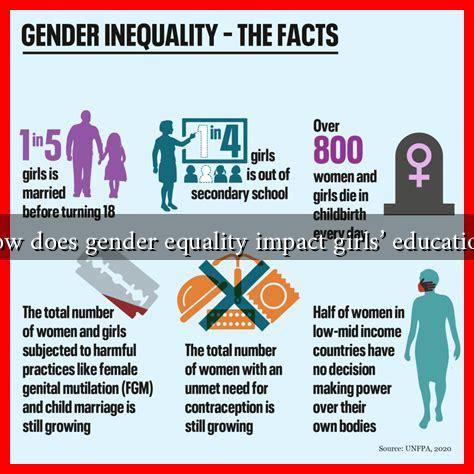-
Table of Contents
How Does Gender Equality Impact Girls’ Education?
Gender equality is a fundamental human right and a crucial element for sustainable development. It plays a significant role in shaping educational opportunities for girls around the world. When gender equality is prioritized, it not only enhances the educational experiences of girls but also contributes to broader societal benefits. This article explores the multifaceted impact of gender equality on girls’ education, highlighting key statistics, case studies, and the importance of fostering an equitable learning environment.
The Importance of Gender Equality in Education
Gender equality in education refers to the equal access, participation, and treatment of girls and boys in educational settings. Achieving gender equality in education is essential for several reasons:
- Empowerment: Education empowers girls, providing them with the knowledge and skills necessary to make informed decisions about their lives.
- Economic Growth: Educated women contribute significantly to economic development, as they are more likely to participate in the workforce and earn higher incomes.
- Health Benefits: Educated women tend to have better health outcomes for themselves and their families, including lower maternal and child mortality rates.
- Social Change: Education fosters critical thinking and encourages girls to challenge societal norms, leading to positive changes in their communities.
Barriers to Girls’ Education
Despite the recognized benefits of gender equality in education, numerous barriers still hinder girls’ access to quality education. These barriers include:
- Cultural Norms: In many societies, traditional gender roles prioritize boys’ education over girls’, leading to higher dropout rates among girls.
- Poverty: Families in low-income communities may prioritize boys’ education due to limited resources, often forcing girls to leave school to support the family.
- Child Marriage: In some regions, girls are married off at a young age, which often results in the end of their education.
- Safety Concerns: Girls may face violence or harassment while traveling to and from school, deterring them from attending.
Case Studies: Success Stories of Gender Equality in Education
Several countries have made significant strides in promoting gender equality in education, leading to improved outcomes for girls. Here are a few notable examples:
- Rwanda: Following the 1994 genocide, Rwanda implemented policies to promote gender equality in education. As a result, the country has achieved near gender parity in primary and secondary education, with girls often outperforming boys in national exams.
- Bangladesh: The government of Bangladesh, along with NGOs, has worked to increase girls’ enrollment in schools through initiatives like stipends for families. This has led to a significant increase in girls’ attendance rates, with girls now comprising nearly half of all students in secondary schools.
- Norway: Norway has long been a leader in gender equality, and its education system reflects this commitment. The country has implemented policies that promote equal opportunities for all genders, resulting in high educational attainment for girls and women.
The Global Impact of Educating Girls
Investing in girls’ education has far-reaching implications for global development. According to the World Bank, every additional year of schooling for girls can increase their future earnings by up to 20%. Furthermore, educated women are more likely to educate their children, creating a cycle of empowerment and opportunity. The United Nations Sustainable Development Goals (SDGs) emphasize the importance of gender equality and quality education as interconnected goals that can drive progress across various sectors.
Conclusion: The Path Forward
Gender equality is not just a moral imperative; it is a catalyst for educational advancement and societal progress. By addressing the barriers that hinder girls’ education and promoting policies that foster gender equality, we can unlock the potential of millions of girls worldwide. The success stories from countries like Rwanda and Bangladesh serve as powerful reminders of what can be achieved when we prioritize gender equality in education. As we move forward, it is essential to continue advocating for equal opportunities for all genders, ensuring that every girl has the chance to learn, grow, and thrive.
For more information on the importance of girls’ education and gender equality, visit UNICEF’s Girls’ Education page.

